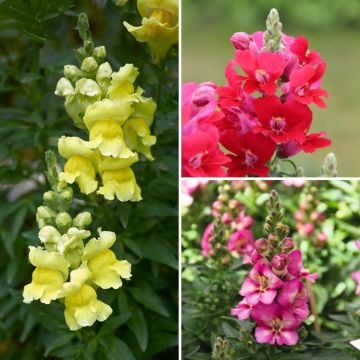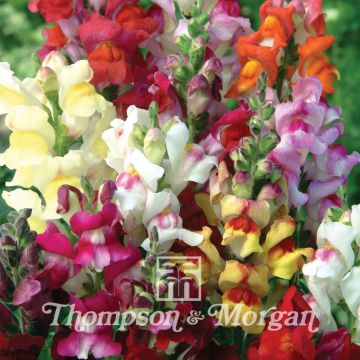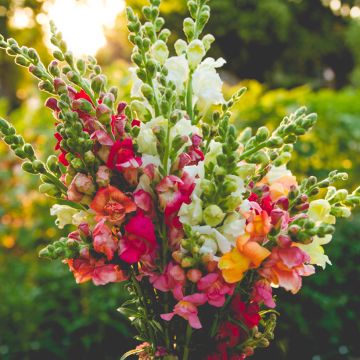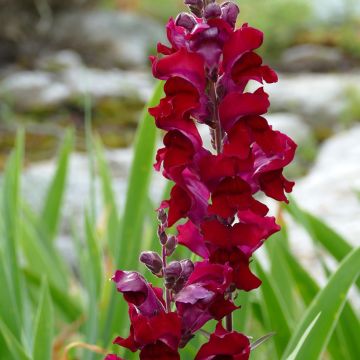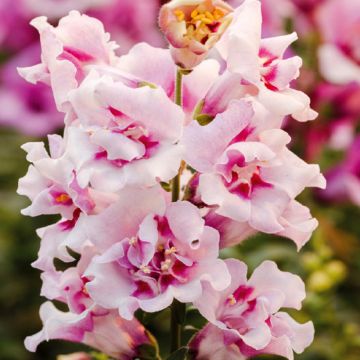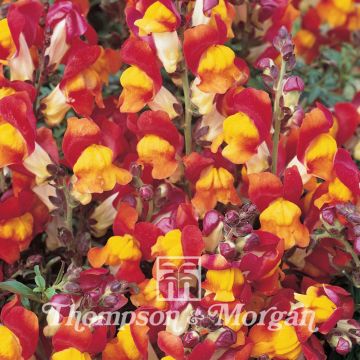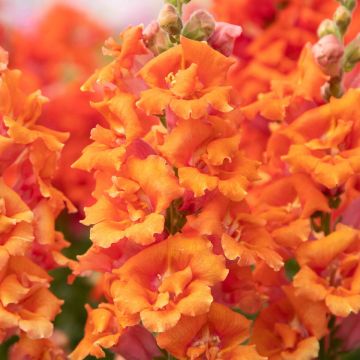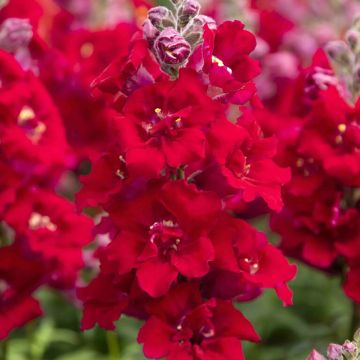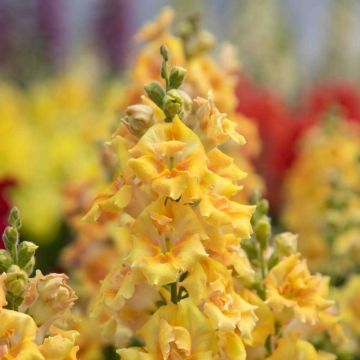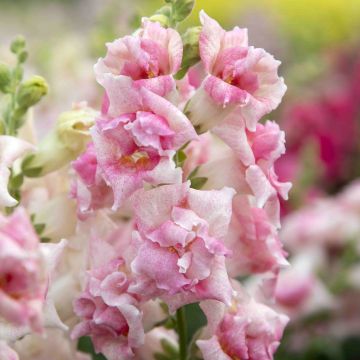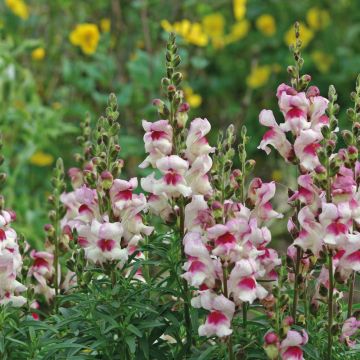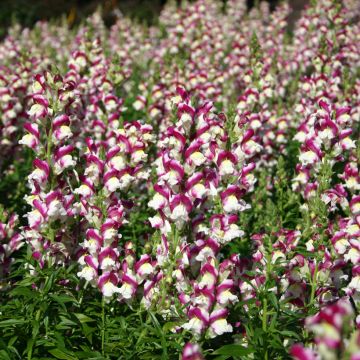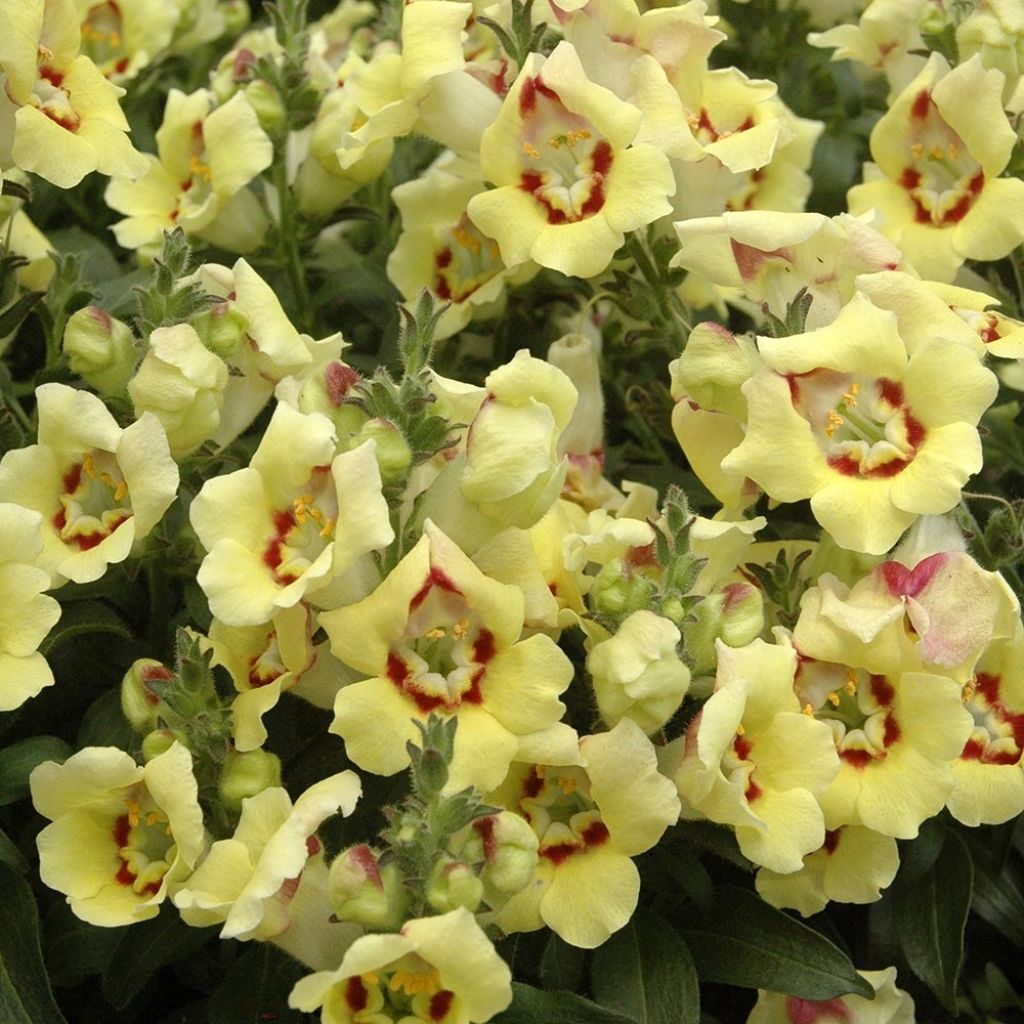

Antirrhinum majus Fruit Salad Up Yellow
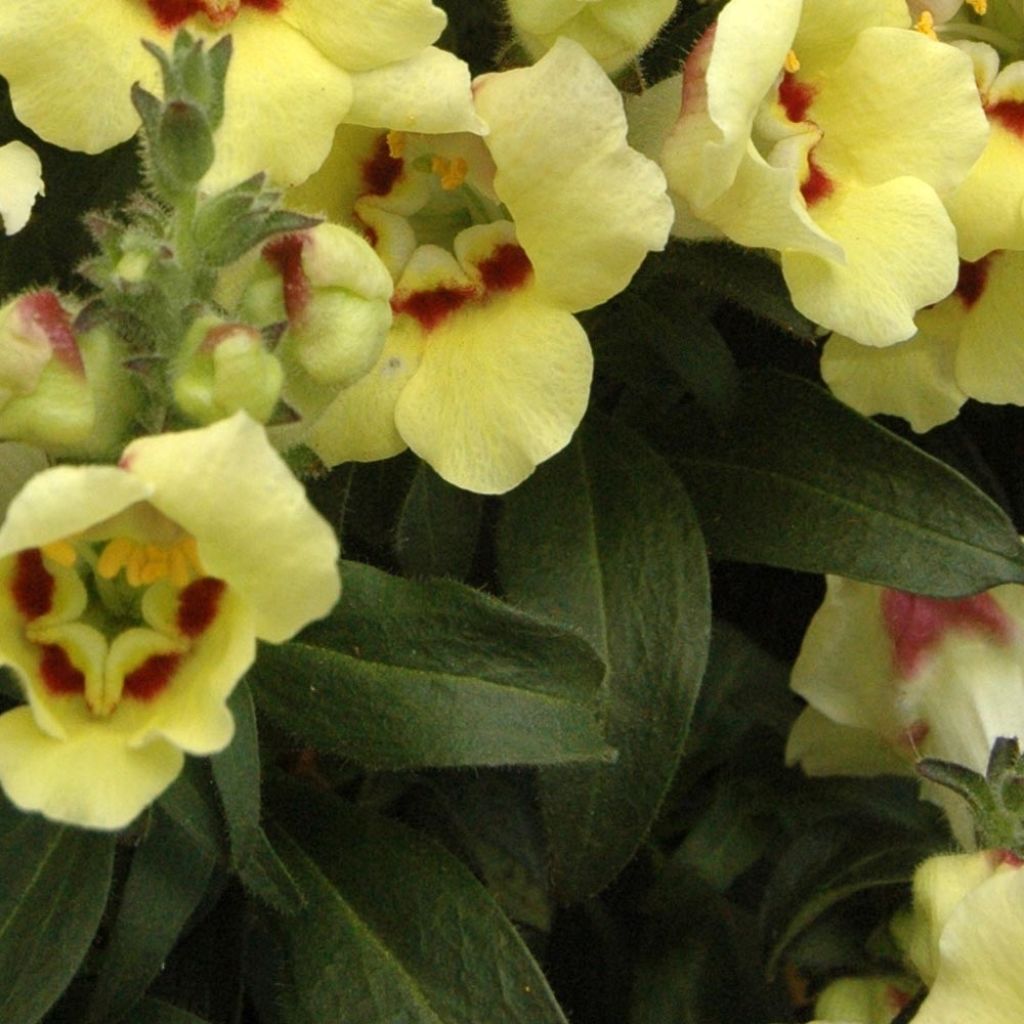

Antirrhinum majus Fruit Salad Up Yellow
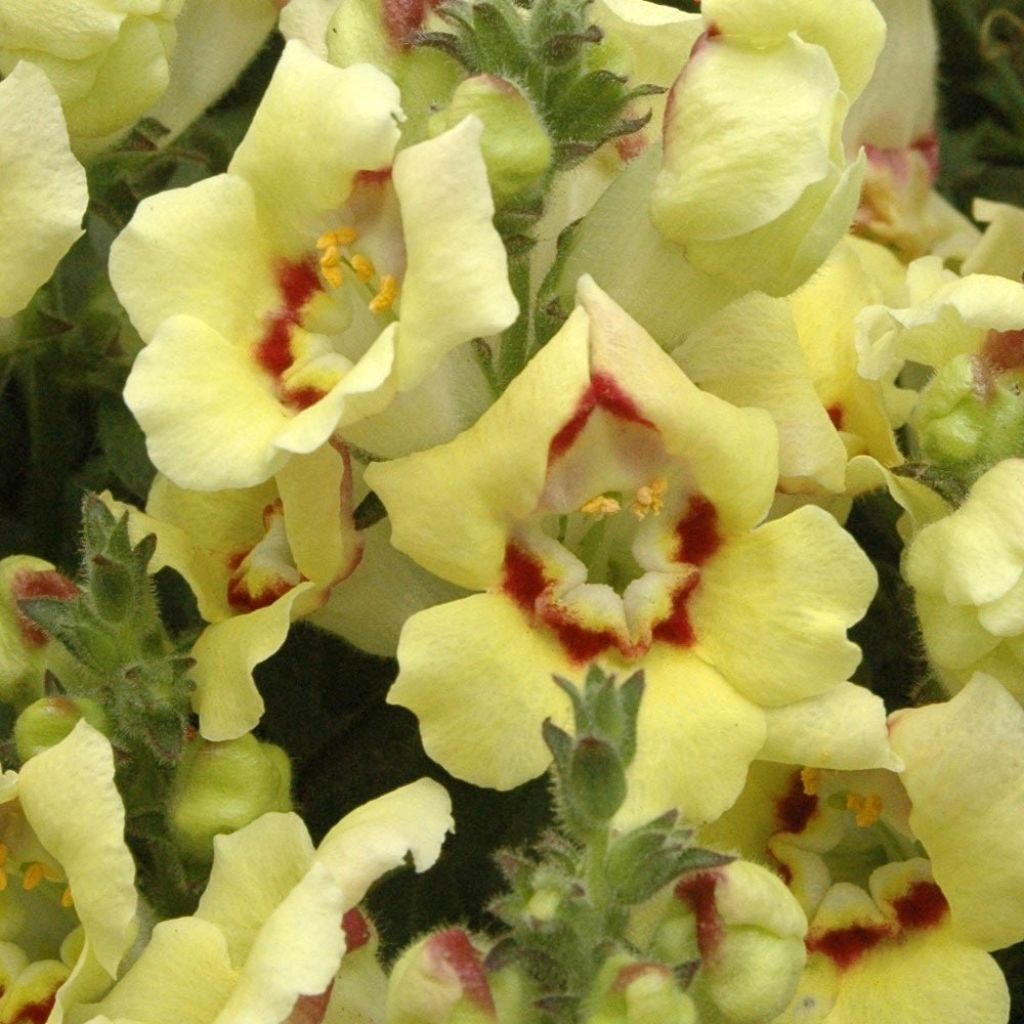

Antirrhinum majus Fruit Salad Up Yellow
Antirrhinum majus Fruit Salad Up Yellow
Antirrhinum x majus Fruit Salad Up Yellow
Snapdragon
Very beautiful, have grown well and bloomed all summer (still in flower).
Mireille, 18/09/2021
Special offer!
Receive a €20 voucher for any order over €90 (excluding delivery costs, credit notes, and plastic-free options)!
1- Add your favorite plants to your cart.
2- Once you have reached €90, confirm your order (you can even choose the delivery date!).
3- As soon as your order is shipped, you will receive an email containing your voucher code, valid for 3 months (90 days).
Your voucher is unique and can only be used once, for any order with a minimum value of €20, excluding delivery costs.
Can be combined with other current offers, non-divisible and non-refundable.
Why not try an alternative variety in stock?
View all →This plant carries a 12 months recovery warranty
More information
We guarantee the quality of our plants for a full growing cycle, and will replace at our expense any plant that fails to recover under normal climatic and planting conditions.
Would this plant suit my garden?
Set up your Plantfit profile →
Description
Antirrhinum x majus Fruit Salad Up Yellow is a new, highly fragrant snapdragon with just as many flowers as traditional varieties. Its beautifully large, unusually shaped and wonderfully coloured pale yellow flowers with vivid red markings create a breathtaking spectacle, densely packed in generous spikes all summer. This variety is simply stunning as a cut flower, and its compact habit works well in rockeries, borders, flower beds, and on the terrace in summer containers.
Antirrhinum, better known as snapdragon, is a genus that was formerly part of the Scrophulariaceae family, but is now transferred to the Plantaginaceae family. Snapdragons are herbaceous perennials or shrubs, originating from America, North Africa, and mountainous regions of Europe.
The brand new 'Fruit Salad' series brings together perennial but short-lived, not very hardy snapdragon hybrids that are best grown as annuals in most regions. These plants are upright, compact and well-branched, quickly reaching 35 cm (14in) high and 30 cm (12in) wide. The stems bear lance-shaped dark green leaves tinged with bronze. It flowers from May-June to September-October with upright spikes, abundantly covered with flowers. In these selected 'Fruit Salad' varieties, the flowers are particularly wide, funnel-shaped, and have large petals. In 'Fruit Salad Up Yellow', the flowers are cream-yellow with a warmer yellow throat marked with small red spots.
Snapdragons are part of our childhood memories. With their small velvety flowers that smell lovely when you bury your nose in them, they are easy to grow for all gardeners in borders, flower beds, or rockeries. In the north or in heavy soil, treat them as annuals. Varieties like 'Fruit Salad' are perfect for cut flowers, flower beds, flowering pots, or cottage gardens with Damask nigella, perennial flax, and valerian (Centranthus ruber). Their flower spikes are highlighted when emerging between bushy plants with decorative foliage (fennel, cineraria maritima, wormwood, lavender, cotton lavender, ground cover roses). Once the plant is established you can regularly remove faded flowers to prolong flowering.
Snapdragons owe their common name to the particular shape of their flowers, which resemble a mouth when pinched.
Note: Please be aware that our young plug plants are professional products intended for experienced gardeners. Upon receipt, transplant and store them under cover (veranda, greenhouse, cold frame...) at a temperature above 14°C (57.2°F) for a few weeks before planting outdoors once all risk of frost has passed.
Report an error about the product description
Antirrhinum majus Fruit Salad Up Yellow in pictures
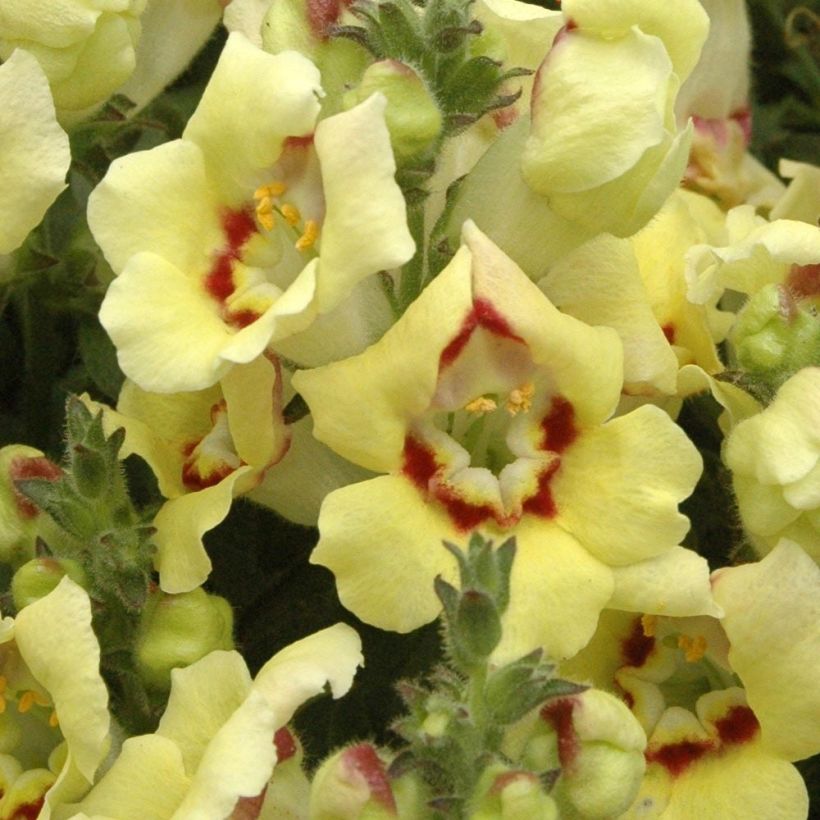



Flowering
Foliage
Plant habit
Botanical data
Antirrhinum
x majus
Fruit Salad Up Yellow
Scrophulariaceae
Snapdragon
Cultivar or hybrid
Other Antirrhinum - Snapdragon
View all →Planting and care
Antirrhinums thrive in fertile, well-drained, even limestone, well-dug, not-too-dry soil, in full sun. They are not very hardy and have a short lifespan, so can be grown as an annual or biennial plant. They may withstand several mild winters, but they then become more susceptible to rust. To try to keep a particular plant, protect it from severe frost in winter, by improving soil drainage (add gravel to your garden soil, slightly raise the planting area) and covering the crown with a thick layer of leaves, they will regrow in spring and bloom earlier.
Planting period
Intended location
Care
-
, onOrder confirmed
Reply from on Promesse de fleurs
Haven't found what you were looking for?
Hardiness is the lowest winter temperature a plant can endure without suffering serious damage or even dying. However, hardiness is affected by location (a sheltered area, such as a patio), protection (winter cover) and soil type (hardiness is improved by well-drained soil).

Photo Sharing Terms & Conditions
In order to encourage gardeners to interact and share their experiences, Promesse de fleurs offers various media enabling content to be uploaded onto its Site - in particular via the ‘Photo sharing’ module.
The User agrees to refrain from:
- Posting any content that is illegal, prejudicial, insulting, racist, inciteful to hatred, revisionist, contrary to public decency, that infringes on privacy or on the privacy rights of third parties, in particular the publicity rights of persons and goods, intellectual property rights, or the right to privacy.
- Submitting content on behalf of a third party;
- Impersonate the identity of a third party and/or publish any personal information about a third party;
In general, the User undertakes to refrain from any unethical behaviour.
All Content (in particular text, comments, files, images, photos, videos, creative works, etc.), which may be subject to property or intellectual property rights, image or other private rights, shall remain the property of the User, subject to the limited rights granted by the terms of the licence granted by Promesse de fleurs as stated below. Users are at liberty to publish or not to publish such Content on the Site, notably via the ‘Photo Sharing’ facility, and accept that this Content shall be made public and freely accessible, notably on the Internet.
Users further acknowledge, undertake to have ,and guarantee that they hold all necessary rights and permissions to publish such material on the Site, in particular with regard to the legislation in force pertaining to any privacy, property, intellectual property, image, or contractual rights, or rights of any other nature. By publishing such Content on the Site, Users acknowledge accepting full liability as publishers of the Content within the meaning of the law, and grant Promesse de fleurs, free of charge, an inclusive, worldwide licence for the said Content for the entire duration of its publication, including all reproduction, representation, up/downloading, displaying, performing, transmission, and storage rights.
Users also grant permission for their name to be linked to the Content and accept that this link may not always be made available.
By engaging in posting material, Users consent to their Content becoming automatically accessible on the Internet, in particular on other sites and/or blogs and/or web pages of the Promesse de fleurs site, including in particular social pages and the Promesse de fleurs catalogue.
Users may secure the removal of entrusted content free of charge by issuing a simple request via our contact form.
The flowering period indicated on our website applies to countries and regions located in USDA zone 8 (France, the United Kingdom, Ireland, the Netherlands, etc.)
It will vary according to where you live:
- In zones 9 to 10 (Italy, Spain, Greece, etc.), flowering will occur about 2 to 4 weeks earlier.
- In zones 6 to 7 (Germany, Poland, Slovenia, and lower mountainous regions), flowering will be delayed by 2 to 3 weeks.
- In zone 5 (Central Europe, Scandinavia), blooming will be delayed by 3 to 5 weeks.
In temperate climates, pruning of spring-flowering shrubs (forsythia, spireas, etc.) should be done just after flowering.
Pruning of summer-flowering shrubs (Indian Lilac, Perovskia, etc.) can be done in winter or spring.
In cold regions as well as with frost-sensitive plants, avoid pruning too early when severe frosts may still occur.
The planting period indicated on our website applies to countries and regions located in USDA zone 8 (France, United Kingdom, Ireland, Netherlands).
It will vary according to where you live:
- In Mediterranean zones (Marseille, Madrid, Milan, etc.), autumn and winter are the best planting periods.
- In continental zones (Strasbourg, Munich, Vienna, etc.), delay planting by 2 to 3 weeks in spring and bring it forward by 2 to 4 weeks in autumn.
- In mountainous regions (the Alps, Pyrenees, Carpathians, etc.), it is best to plant in late spring (May-June) or late summer (August-September).
The harvesting period indicated on our website applies to countries and regions in USDA zone 8 (France, England, Ireland, the Netherlands).
In colder areas (Scandinavia, Poland, Austria...) fruit and vegetable harvests are likely to be delayed by 3-4 weeks.
In warmer areas (Italy, Spain, Greece, etc.), harvesting will probably take place earlier, depending on weather conditions.
The sowing periods indicated on our website apply to countries and regions within USDA Zone 8 (France, UK, Ireland, Netherlands).
In colder areas (Scandinavia, Poland, Austria...), delay any outdoor sowing by 3-4 weeks, or sow under glass.
In warmer climes (Italy, Spain, Greece, etc.), bring outdoor sowing forward by a few weeks.






























